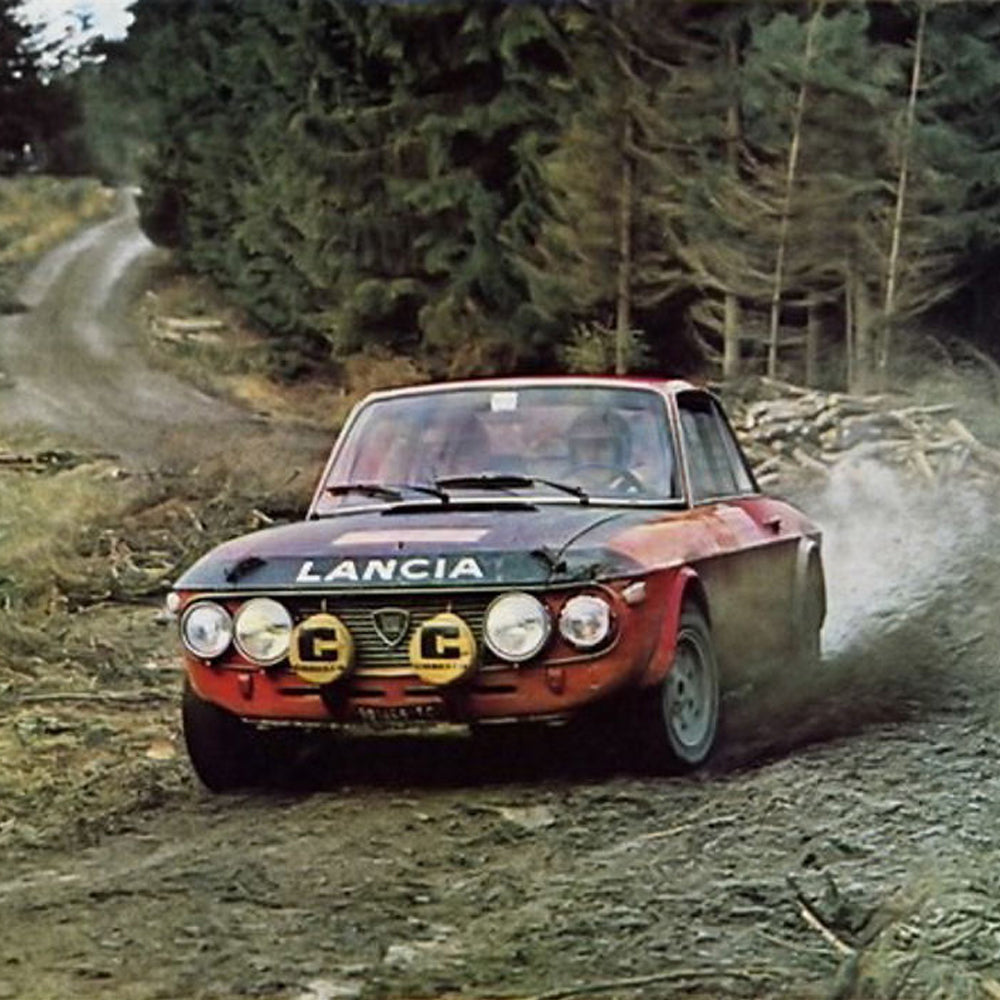


Upon first testing one in 1967,Road & Track summed up the Fulvia succinctly as “a precision motorcar, an engineering tour de force”. I can’t put it any better myself, so I’ll let the specs speak for themselves.
Front-wheel-driven, its engine was an extremely-narrow angle 13 degree V4 featuring two overhead cams, one each dedicated to exhaust and intake valve operation. Similar to Volkswagen’s later VR6, the small vee angle allowed the use of a single cylinder head for both banks. Whether or not it’s a SOHC or DOHC design is open to interpretation, part of what makes it such a fascinating little motor. The whole thing is mounted longitudinally at a 45 degree slant, looking all the world like a short little inline three cylinder with a valve cover so fat it’d do a 426 Hemi proud. Displacement varied, but all were of an oversquare design, with the largest and most powerful version having a swept volume of 1584 CC and churning out a healthy 132 HP as fitted to the 1.6 HF (High Fidelity, by which Lancia meant “highly tuned”).
Front suspension was by means of double wishbones with a single transverse leaf spring, while outback a more conventional beam axle kept the wheels in contact with the road. Brakes were by means of four-wheel discs, quite a novelty considering the car’s 1963 introduction.
Three body styles were offered, a stately Berlina, somewhat reminiscent of Alfa Berlinas of the period, a thin-pillared and elegant coupe, and the wild Zagato-penned “Sport” coupe, which featured a cabin-activated electric elevator which raised the rear hatch slightly for better ventilation while on the move—it’s these kinds of quirky little details that make the Fulvia such a treat.



Nicknamed by race fans “Fanalone” for “big headlight”, the light-footed Fulvia HF was very successful in international rallying, winning several stages over the years, including Monte Carlo, but never quite matched the incredible career of its wedge-shaped replacement, the awesome Stratos. Still, the FWD Fulvia displayed incredible poise and traction where its mostly rear-driven competitors sometimes struggled, hinting at the coming days of all-wheel drive domination, of which Lancia played a major role in.
Today the Fulvia exists in a similar market standing to similar Alfa coupes, with prices healthy and rising steadily. Though perhaps lacking a final degree of flickability afforded by Alfa’s rear-driven chassis, Fulvias are easily one of the best-handling FWD cars ever made, and offer an intriguing alternative to Giulia ownership—I for one wouldn’t hesitate if offered a choice, the Lancia’s easily as pretty as it’s Milanese cousins (at least in coupe forms!), but with an even deeper world of mechanical intrigue just beneath the surface.
The idea that Lancia’s legacy will likely end with badge-engineered Town & Country minivans is nearly unbearable, so I chose to remember them as they once were—builders of elegant and progressive performance machines with a dose of elegance and style unmatched in modern times.
By the way, it’s pronounced “Lan-cha”.



Photo Sources:eurostance.co.uk ,favcars.com ,rallymemory.blogspot.com ,viva-lancia.com ,philseed.com




















































